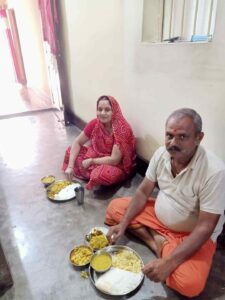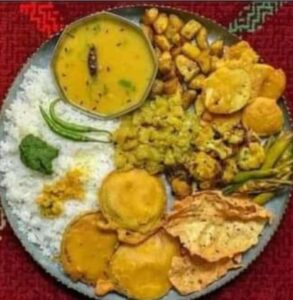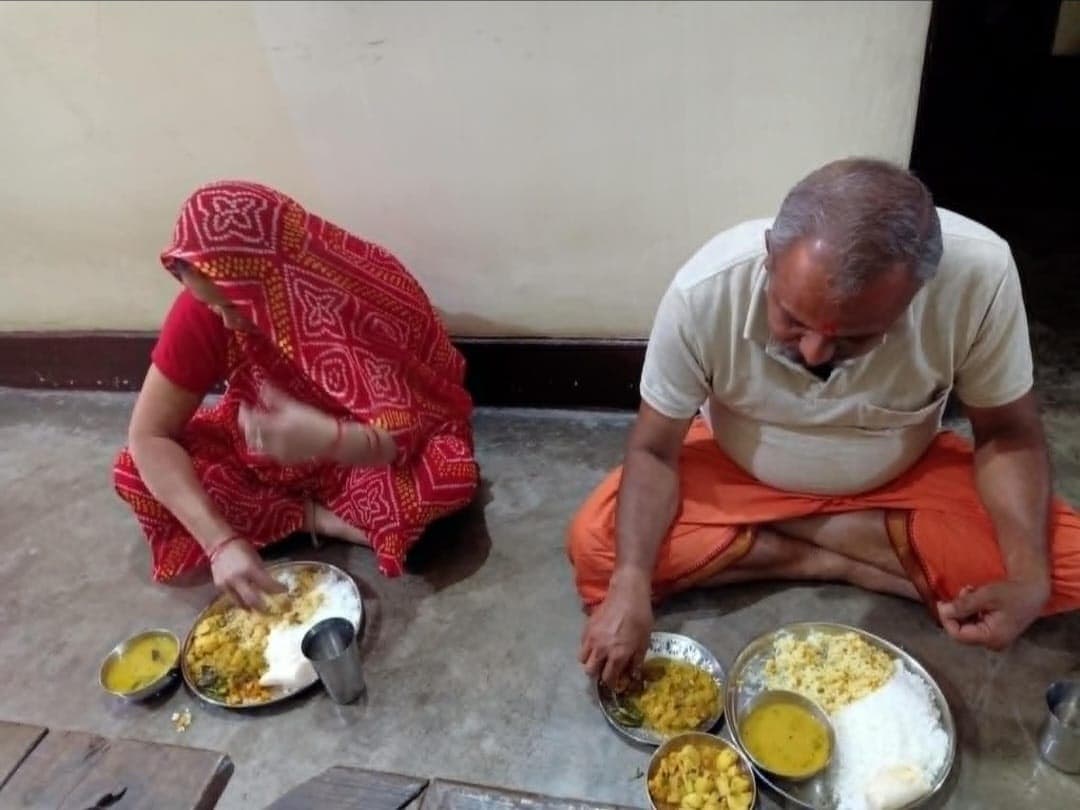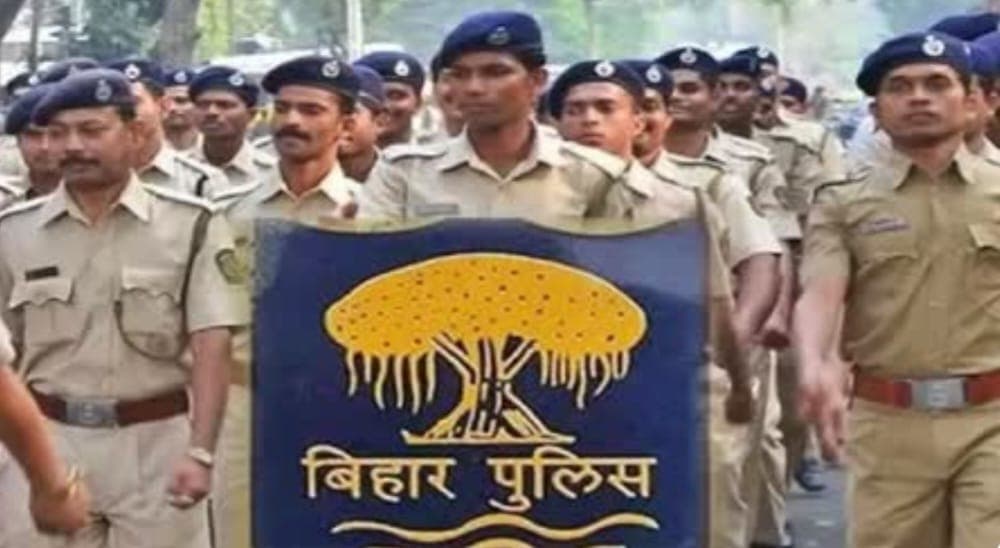By Neeraj Kumar
Patna: The revered four-day Chhath Puja festival has begun with the traditional Nahai-Khai ritual today, November 5, 2024. This significant festival is celebrated primarily in Bihar, Jharkhand, Uttar Pradesh, and parts of Uttarakhand, and it is also observed with devotion in other Indian states and countries like Mauritius, Fiji, and Guyana.
The Chhath Puja, dedicated to the worship of the Sun God and his sister Chhathi Maiya, is primarily observed by women who undertake a 36-hour Nirjala (waterless) fast. Nahai-Khai marks the initial phase of this fast, where the devotees purify themselves with a sacred bath in a river or pond, and consume a meal of pumpkin curry, rice, and chana dal, which they prepare and share with their families. This meal is believed to bring positivity and purity to their lives.

Traditionally, Nahai-Khai dishes are cooked over a mango wood fire on a wooden stove, rather than a modern kitchen stove. The use of rock salt and seasonal vegetables reflects the festival’s emphasis on purity. Once this satvik (pure) food is first offered to the Sun God, it is then consumed by the fasting women, followed by the rest of the family.

Yellow and red garments hold particular significance during Chhath, symbolising devotion and auspiciousness, although other colours are also worn. From this day until the end of the festival, Chhathvratis (those observing the fast) sleep on the ground, signifying their devotion and dedication. Tamasic (heavy or non-vegetarian) foods are strictly avoided, and black clothing is also seen as inauspicious.
The second day of Chhath Puja, known as Kharna, falls on November 6. Devotees prepare kheer made of rice and jaggery, which is shared as prasad. On 7 November, the festival’s high point occurs with the evening Arghya, where devotees gather at riverbanks to offer prayers to the setting sun. The festival concludes on the morning of 8 November with a final offering, known as Arghya, to the rising Sun.

A unique aspect of Chhath Puja is the sindoor ritual among married women, who apply a long stripe of sindoor from the forehead to the nose, symbolising the blessings of longevity and prosperity for their husbands. Orange sindoor is often preferred, connecting to the festival’s spiritual ties with purity and protection, as represented by Lord Hanuman, a revered figure known for his devotion and strength.
Chhath Puja’s origin dates back to mythological tales. According to Hindu beliefs, the festival began when Lord Rama and Sita returned to Ayodhya after their exile, during which the people honoured them by fasting and worshipping the Sun God. Another tale tells of King Priyavrat and his wife Malini, who, upon praying to Shasthi Devi (Chhathi Maiya), were blessed with a son after years of childlessness.
Celebrated on the sixth day of the Kartik month’s Shukla Paksha, Chhath Puja remains a powerful expression of faith and family unity, reinforcing the values of purity, devotion, and respect for nature. As the festival begins, it brings with it not only the promise of blessings from Chhathi Maiya but also an opportunity for devotees to renew their faith and express gratitude for life’s blessings.











